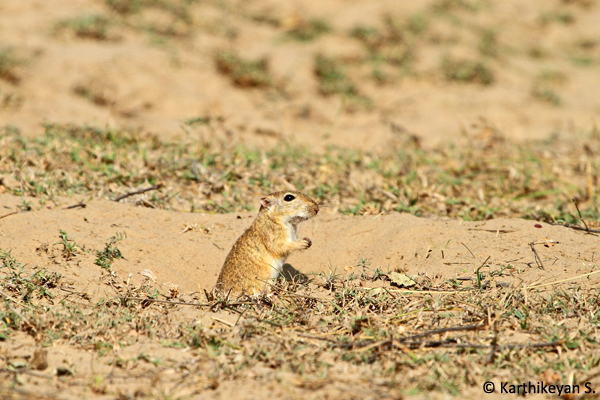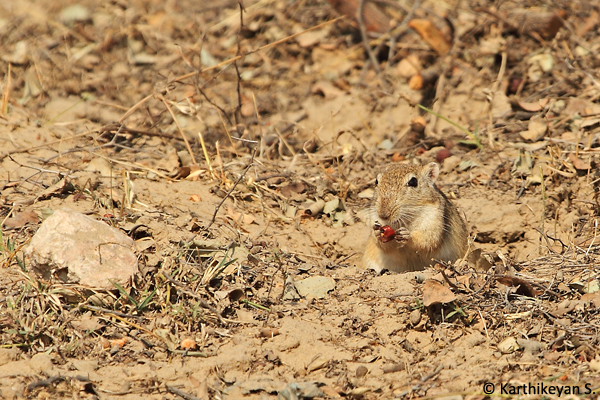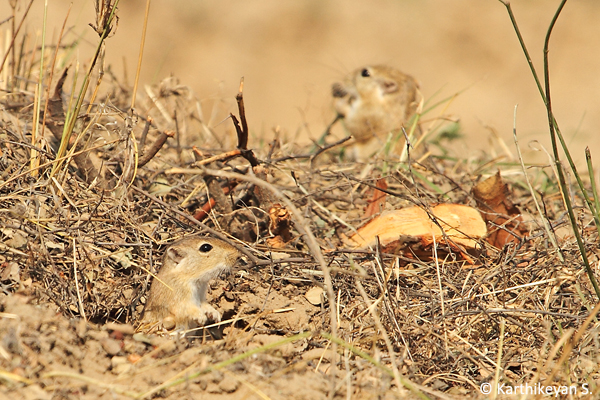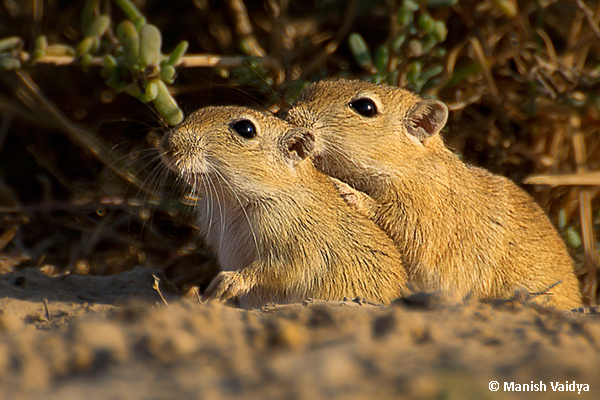The word ‘rodent’ brings up images of rats that chew gaping holes in your favourite dress or bite the wiring in the house steeping your evening in darkness. And the first thought is to eliminate them… as soon as possible!
This attitude is based on our limited exposure or interaction with just two or three species of rodents. Rodents are a very large group indeed. In fact, they account for about 40% of all mammals on Planet Earth – that would be a whopping 2000 or so species! Believe me – they are not all as bad as you think.
A couple of years ago, I had narrated my observation about and interaction with the Long-tailed Tree Mouse. That was just one of the several interesting encounters that I have had with rodents.
More recently during a visit to Rajasthan, I had the opportunity not only to photograph but also observe the Indian Desert Jird Meriones hurrianae for short periods of time over a couple of days. Even without realizing, I had developed a liking for this absolutely adorable little creature and its mannerisms.
I was trying to photograph a very active lizard when I got my first glimpse of the Indian Desert Jird. I saw something pop out of the ground and disappear quickly. This was repeated a couple of times in quick succession. Suddenly, I saw sand flying – yes, the little fellow was busy burrowing! So a short wait at the same spot was in order. Sitting in the hot, harsh noon sun was hard. The jird itself was happily going about its duties in the shade of a bush. The wait was rewarded.

On a couple of occasions, the jird even ran in the open, out of one hole only to enter another one nearby!

Over the next few days I observed it feeding on plants too! Jirds are known to eat seeds, roots and also insects.

A friend (Mr.Manish Vaidya) who was also observing and photographing these endearing jirds managed to freeze a couple of frames depicting some interaction between individuals sharing a burrow. So little is known about the behaviour of these little creatures that I can at best indulge in some conjecture.

The jirds are terrestrial creatures living in burrows – actually one complex underground burrow complete with interconnecting tunnels and multiple entrances on the surface! The picture below is that of the burrow which is located at the base or in the vicinity of a bush where the soil is a bit hard and not very sandy.
As the name suggests, the Desert Jird is found in the desert (arid) regions of Northwest India. Consequently, its distribution spans Rajasthan (mainly the Thar Desert) and the Kutch regions of Gujarat.
The very fact that they are so diverse a group means that they have an important role to play in their respective habitats. At the end of the day, it is important for us to realize that not all rodents are bad. A little time spent trying to understand them will only be enriching.